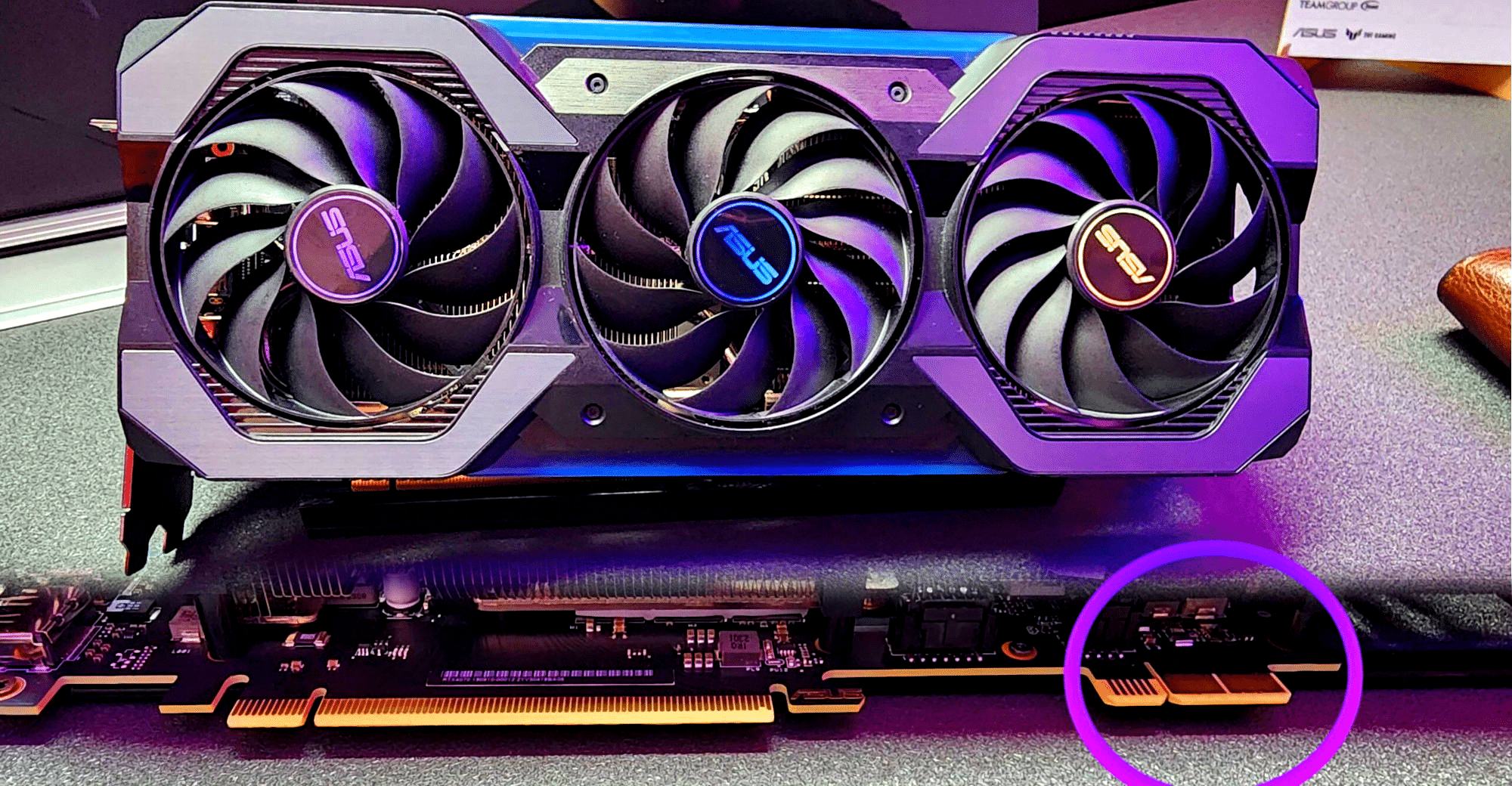The mechanism called “Q-Release Slim”, designed to help with the installation and removal of GPUs on Asus motherboards, has raised concerns about damaged GPU connectors. The manufacturer has issued a statement to calm concerns.
Over the past few generations, graphics cards have developed into large and bulky components. With the arrival of the RTX 4090 at the latest, three slots and more are no longer a rarity, which in turn can lead to a (literally) more difficult installation.
In response, motherboard manufacturers have come up with various solutions to simplify the installation and removal of GPUs. At Asus, the mechanics have been called “Q-Release Slim” since the AM5 motherboards for Ryzen 9000.
- In this case, the graphics card can be removed completely without tools. According to Asus, it is sufficient to hold the mainboard in place with one hand while the other hand lifts the GPU from the left side.
- The slim version follows the regular “Q-release”, which required an additional and slightly more distant push button to expand a graphics card.
According to consistent reports, however, there are problems with Asus Q-Release Slim in the context of the new Nvidia GPUs around the RTX 5090 and RTX 5080.
Last week, among others, Hardwareluxx editor Andreas Schilling published pictures of slight damage caused by Q-Release Slim. The photos followed a similar video that was circulating on the Chinese video portal bilibili.
I’m not happy with the solution either. We use the Strix X870E-E Gaming for testing the graphics cards. So I have had to remove graphics cards from the slot a few dozen times. This didn’t always go smoothly and very often the card got stuck in the slot. First damage visible. https://t.co/CHVKFBrbY8 pic.twitter.com/1pEUXmQQES
— Andreas Schilling (@aschilling) January 24, 2025
Problems with Q-Slim Release? Asus responds on Reddit
The people affected are therefore primarily testers who sometimes remove the graphics card from the mainboard dozens of times and reinsert it – our editor Alex can certainly tell you a thing or two about these processes in the course of his review of the RTX 5090.
Despite the comparatively small group of those affected, Asus probably felt compelled to issue a statement on this issue due to the burgeoning unrest on social media. Early on, Tony Yu (managing director of Asus China) stated that a solution would be sought (via HXL).
On the AMD subreddit, Asus finally officially commented on the issue.
PSA – ASUS North America Statement on Motherboard PCIe Q-Release Slim Design and Additional Information
byu/ASUS_MKTLeeM inAmd☻Q-Release Slim was reportedly internally tested for such damage. According to the report, the signs of wear and tear on the PCB can occur after more than 60 installations and removals; a number that the above-mentioned group of GPU reviewers can easily achieve.
If such a defect is visible, according to Asus, it is purely visual and has no influence on functionality.
At this point, the Asus employee also emphasizes that they strictly adhere to the instructions for using Q-Release Slim. However, if problems do arise, the Asus employee promises that they will “take care of them,” at least for US customers.


